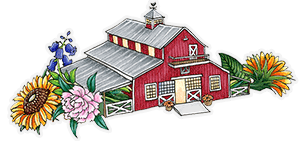Yan, Tan, Tethera,
…Methera, Pip
1, 2, 3, 4, 5 - and so on. This old Northern English counting system was how the shepherds kept score of the number of sheep in their flocks. Every 20 meant a mark on the crook, or a pebble dropped to denote the group - 5 ‘Score’ was 100 sheep. And so on.
There’s a traditional folk song written/sung by Jake Thackray about ‘Old Molly Metcalfe’ and it illustrates perfectly the sing-song way you might apply the count. But the deeper meaning of the song is to paint the picture of the life of the shepherd. Sometimes I might call myself Old Molly Metcalfe. One can easily imagine the crooked shepherdess, her life of serving her flock and her community, keeping count of her sheep. It is an earthy and haunting tale, but it feels accurate. .
Speaking of counting, we’re coming upon due dates. Daisy and Dodie, Teeswater ewes, are 3 years old and this will be their third delivery in as many years. The gals have grown so well on account of their advantage of height and girth, and they’ve delivered enormous lambs in the past.
Their giant-sized lambs were, in part, due to the fact that they’d been bred ‘up’ and their Valais Blacknose rams were larger than they were. They also had larger lambs because they were able to access all of the supplements, forage, and advantages of being a taller and heavier breed amongst my many Shetland ewes. They could walk up to the breakfast bar and fill up their gullets twice as quickly as the tiny Shetlands could, and it meant that their lambs grew considerably larger.
I don’t need to helicopter-mom the ewes so much at parturition. They are perfectly equipped to lamb all unto themselves. That’s the beautiful thing about raising sheep. However, because of Daisy and Dodie’s history of delivering huge lambs, I will post myself nearby, in case it’s necessary. I’ve ‘pulled’ their lambs over the past couple of years to assist them in delivery. It hasn’t affected their health or ability to nurse and care for their lambs wonderfully.
Teeswater sheep are from the Teesdale region of England and are considered ‘critical’ on the Livestock Conservancy’s list here in North America. Daisy and Dodie’s dam, Dolly, was bred by artificial insemination and that is how we were able to have Teeswater genetics here in the U.S.. And then their sire, ‘Sport’, was a test tube of Teeswater semen, as well. In the past, Daisy and Dodie have had Valais Blacknose x Teeswater lambs, so this is their first time to have been bred with a Teeswater ram(named, ‘Goose’) and so I am hoping that the lambs are appropriately sized and easier for them to deliver.
It is exciting to raise diverse breeds, and especially rare breeds. I am hoping that Daisy and Dodie’s lambing events are without incident. I will keep you apprised. I’m hoping by the end of the week to be counting Yan, Tan, Tethera, Methera…but we’ll see if there’s a Pip!
